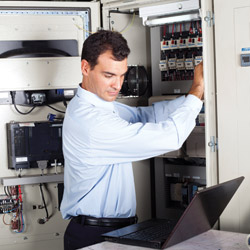December 15 2018
Extend the Life of Your Older Converting Equipment (And Enhance Production, Too)

That slitter rewinder you bought 40 years ago has been pretty good to you overall. But more recently there have been warning signs: glitches, worn-out parts needing replacement, and performance that’s not quite measuring up. If this scenario sounds familiar, it may be time for an upgrade. The manufacturer of the machine will generally handle some, if not all, upgrades.
There are three basic types of converting equipment upgrades:
- Controls: A faulty CPU in the programmable logic controller (PLC) is all it takes to put your entire system out of commission. Replacing your operator interface (OI) or human machine interface (HMI) can provide additional functionality that makes your operators’ lives easier while ensuring better control. These days, OIs and HMIs come in multiple screen sizes, with a variety of capabilities, depending on your particular needs.
- Drives: Replacing the drives in your existing system with variable-frequency AC drives can mean better efficiency and more control. Voltage ranges vary, but 480VAC is the most popular choice.
- Motors: Swapping your equipment’s old motors with new ones can result in substantial energy savings (which in turn means lower costs). This is especially true when you switch from DC motors to high-efficiency AC motors. This will require AC drives as well, but it’s worth it – and you might even qualify for energy credits from your utility company or the U.S. government.
Since a sudden equipment failure can result in prolonged downtime, lost revenue, and operational headaches, planning an upgrade is a smart strategy. Not only will a proactive upgrade spare you stress, it can provide an array of benefits that improve your manufacturing operations, such as:
- Less operator intervention
- Increased throughput
- Better tension control
- Safer control signal voltages
- Improved reliability


